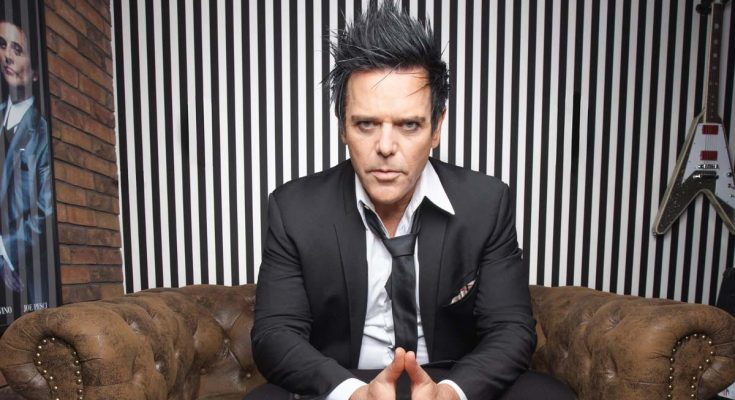You think you know Richard Zven Kruspe. Think again. Behind the pyrotechnics, the bone‑shaking riffs, the cold industrial façade, there lies a man forged through fire, loss, ambition, and the relentless pursuit of sonic transcendence. This is the untold story of Rammstein’s mysterious guitar genius who redefined rock, fire, and fame forever.
Born on June 24, 1967 in Wittenberge, East Germany, Kruspe entered life under the name Sven Kruspe before later adopting the name Richard Zven as a deliberate act of reinvention—a statement that nobody is bound to the name given at birth. (Wikipedia) His childhood was not gilded: his parents divorced early; his mother remarried, but Richard never warmed to his stepfather. (rammsteinworld.com) The family relocated to the village of Weisen, and the young Richard began to chafe under the constraints of conformity, often slipping away to sleep on park benches in adolescence. (Wikipedia) He was moody, conflicted, prone to sudden changes of temperament—intensity coursing through him, waiting to find an outlet. (rammsteinworld.com) To channel that inner turbulence, he threw himself into sports, particularly wrestling. (Wikipedia) At one point, the young Richard recalled that his aggression had grown such that his parents intervened, pushing him toward physical discipline to contain it. (Wikipedia)
In a country starved of Western rock, the forbidden ideals of freedom and expression became magnetic. Kruspe discovered the stage he could build in the echoes of bands like KISS and Black Sabbath, whose music slipped through the Iron Curtain as subversive thrills. (Wikipedia) At age sixteen, on a trip to Czechoslovakia with friends, he bought a guitar. Originally he planned to profit by reselling it, but fate intervened: back in East Germany, a camping acquaintance demanded he play. He strummed, inarticulate and raw, and felt something shift. “The harder I played,” he later said, “the more excited she got … something clicked in my head.” (RammWiki) From that moment forward, he practiced endlessly, day and night, as if music would stave off the chaos inside him. (rammstein.fandom.com)
By 1988 or so, Kruspe moved to East Berlin—living with little but a drum kit and a guitar, creating songs in isolation, cut off from any scene. (Wikipedia) Then came October 10, 1989: a protest erupted near a Berlin subway station, and Kruspe found himself caught in it. Police hit him in the head, arrested him, and detained him for days—standing against a wall, interrogated and bruised, until he decided he would no longer stay in a cage of fear. (Wikipedia) After his release, he slipped through Hungary and Austria and reached West Germany. The Berlin Wall soon fell, and he returned east—but the man who came back was no longer the same. (Wikipedia)
Those scars—the physical ones from arrest, the emotional ones from identity and exile—became the fuel for his creative furnace.
In the early 1990s Richard played in several underground bands: Das Elegante Chaos, Orgasm Death Gimmick, and First Arsch (with Till Lindemann). (Wikipedia) But his vision was larger: to marry the mechanical clang of machines with the primal roar of heavy guitar. In 1993 he and recurring collaborators Oliver Riedel and Christoph Schneider began experimenting, and when he caught Lindemann humming as he worked, he pressed him into singing for this new project. (rammsteinworld.com) The band, originally dubbed Tempelprayers, soon evolved into Rammstein—named after a German air disaster (Rammstein Air Base)—and debuted in 1994 after winning a contest that granted them studio time. (Wikipedia)
As Rammstein took shape, Kruspe stood at the nucleus—the architect of sound. He crafted riffs that seethed with mechanized brutality; he insisted on the marriage of precise, industrial rhythms with sweeping melody; he became the invisible force shaping their sonic identity. But power breeds friction. In the years that followed, his role expanded until whispers began: was Kruspe overshadowing the collective? He himself admitted during the recording of Mutter that he had grown too dominant, essentially positioning himself as creative director. (rammsteinworld.com) That tension seeded cracks, especially as Emigrate—his side vehicle—started pulling him in divergent directions.
Emigrate emerged officially around 2004–2005. With it, Kruspe dared to show facets of himself Rammstein’s monolithic façade rarely allowed: he sang in English, slipped in melodic softness, experimented beyond the rigid boundaries of Neue Deutsche Härte. (Coffee House Guitars) The project wasn’t an escape, but a parallel channel—an outlet for impulses the Rammstein machine couldn’t always accommodate.
Throughout it all, Kruspe’s gear choices became stealth statements. For years he endorsed ESP guitars, using models like the 901 and Kirk Hammett signature shapes, until ESP built signature models for him—the RZK‑I and RZK‑II. (Wikipedia) His sound hinged on Mesa/Boogie amplifiers, notably the Dual Rectifier, along with Friedman and Soldano amps—and in recent years he adopted modern tools like the Kemper Profiler for fluid control. (Wikipedia) From EMG 81 pickups he later transitioned to Fishman Fluence—a shift aligning with his desire for tonal evolution. (Wikipedia) Even his strings and picks became signature: Dunlop made his picks, SIT made his strings. (Wikipedia)
Yet what many never see is the man behind the mask. Beneath the stage fire and the disciplined image, Richard is private, introspective, haunted by identity and purpose. He’s spoken in interviews of being “a geek” when it comes to guitar sounds, obsessing over tone, texture, and nuance. (Wikipedia) He holds strong metaphysical beliefs—he has mentioned reincarnation and a conviction that he lived past lives, including as a Native American. (rammsteinworld.com) He’s confessed to overextending himself, to capturing too much space in a collective, and to the constant balancing act between personal urgency and group unity. (rammsteinworld.com)
His personal life mirrors the complexity. He was married to South African actress Caron Bernstein in 1999; the marriage ended around 2004. During that period he even adopted the name Kruspe‑Bernstein, before reverting back post-divorce. (rammsteinworld.com) He has three children: a daughter, Khira Li Lindemann, born in 1991 (with a mother once tied to Till Lindemann), and twins or siblings including Merlin Besson. (rammsteinworld.com) Even his children have made cameo appearances: Khira Li’s voice is heard in Rammstein’s Live aus Berlin on the song “Tier.” (rammsteinworld.com)
In concert he is a force to behold. On the stage’s front right, he commands space, eyes blazing, guitar ablaze. His ear piercing, his leather and black aesthetic, the way he moves, how he and Paul Landers sometimes mirror each other in riff duels—these are expressions of a man who forged his identity by sound and spectacle. (rammsteinworld.com) And yet the fire is rarely gratuitous. In many songs, his parts carry emotional weight: a bending phrase, a harmonic nuance, a feedback-laced transition—all parts of a voice that speaks just as much as Lindemann’s lyrics.
The path hasn’t been smooth. Rammstein’s album Liebe ist für alle da was indexed in Germany due to controversial imagery—one cover depicted Kruspe holding a near-naked woman in a mask as if striking her, prompting censorship. (Wikipedia) The tension of pushing boundaries is no foreign concept to him; he’s operated guaranteed close to the edge for decades. Yet even amid controversies, his resolve remains.
In the studio of their seventh album, tensions between Kruspe and other members led to a shift in production: they chose Olsen Involtini rather than long-time collaborator Jacob Hellner. Some say the change was orchestrated by Kruspe himself to recalibrate the group’s interpersonal dynamics, to inject a fresh mediator into creative fights. (Reddit) One fan observed that Richard worked heavily with Till on the new material before presenting it to the rest, further underscoring the centrality of his creative drive. (Reddit)
Still, for all his intensity and intensity’s risks, Richard has tempered his ambition with patience. Rammstein’s pace is deliberate: albums drip out over years. Their 2019 single “Deutschland” marked their long-awaited return, reaching No. 1 in multiple countries. (Wikipedia) In 2022 they released Zeit, written during lockdowns—proof that even in isolation, Kruspe’s creative engine hums. (guitar-list.com) Meanwhile Emigrate remains a parallel tether—less a diversion and more a sanctuary where Richard can dare new sounds, new textures, new emotional registers.
To see Kruspe as just “Rammstein’s guitarist” is to see only an echo. He is a man who ripped himself from oppressive lines, redefined his identity, and built a colossus of sound. He is the archetype of reinvention—not always comfortable, not always praised, but unwavering. The fire onstage, the riffs, the leather and smoke—they are his language. But behind them lies a soul that wrestles with legacy, with identity, with the tension between control and surrender.
So next time you watch a Rammstein show, when flames erupt and his guitar blades through the mix, look closer. Listen to those leads, the color in the chords, the silent spaces he leaves just long enough to let your own heart catch its breath. Consider the boy who slept on park benches, the runaway rebel suffocated by ideology, the exile in motion, the man who dared to pick up a guitar in defiance. Richard Zven Kruspe did more than play. He sculpted a cultural volcano. And that, more than any pyrotechnic display, is his lasting flame.



